Results 7,601 to 7,610 of 12096
Thread: Anandtech News
-
12-05-17, 08:17 AM #7601
Anandtech: Microsoft Announces Azure VMs with Dual 32-core AMD EPYC CPUs
Microsoft is the first cloud container provider to formally announce a new range of VMs based on the AMD EPYC platform. These VMs will be called the Lv2 Series, varying from 8 cores to 64 cores, and offering substantial DRAM and storage capabilities.
Back at the launch of EPYC, most of the major cloud providers had expressed interest in pursuing the capabilities of the new CPU for deployment in their cloud and to customers. At that time, the major statement was that the cloud providers were in the process of ascertaining the suitability for large-scale deployment, and optimizing the implementation to best suit them and the customers. Several months have passed, and Microsoft is the first to make the jump. Interested parties can, from today, sign up for a preview of the EPYC-based series.
[TABLE]
[TR]
[TD="class: contentwhite, colspan: 5"]Microsoft Azure VM Types[/TD]
[/TR]
[TR="class: tlblue"]
[TD] [/TD]
[TD]Focus[/TD]
[TD]Example[/TD]
[TD]Hardware[/TD]
[TD]Monthly
Pricing*[/TD]
[/TR]
[TR]
[TD="class: tlgrey"]A Series[/TD]
[TD]Entry-level[/TD]
[TD]Development
Low Traffic Web
Small Databases
Proof of Concept[/TD]
[TD]Various[/TD]
[TD]$12+[/TD]
[/TR]
[TR]
[TD="class: tlgrey"]Av2 Series[/TD]
[TD]Higher
Random IOPS[/TD]
[/TR]
[TR]
[TD="class: tlgrey"]B Series[/TD]
[TD]Entry Level
Burst Performance[/TD]
[/TR]
[TR]
[TD="class: tlgrey"]D Series[/TD]
[TD]General
Purpose
Compute[/TD]
[TD]Relational Databases
In-Memory Caching
Analytics[/TD]
[TD]E5-2673 v3[/TD]
[TD]$42+[/TD]
[/TR]
[TR]
[TD="class: tlgrey"]Dv2 Series[/TD]
[TD]D Series
+35% Perf[/TD]
[TD]E5-2673 v3
w/HT[/TD]
[/TR]
[TR]
[TD="class: tlgrey"]Dv3 Series[/TD]
[TD]More Performance[/TD]
[TD]E5-2673 v4
w/HT[/TD]
[/TR]
[TR]
[TD="class: tlgrey"]Ev3 Series[/TD]
[TD]High Memory[/TD]
[TD] [/TD]
[TD]E5-2673 v4[/TD]
[TD]$100+[/TD]
[/TR]
[TR]
[TD="class: tlgrey"]F Series[/TD]
[TD]Compute
Optimized[/TD]
[TD]Batch Processing
Web Servers
Analytics
Gaming[/TD]
[TD]E5-2673 v3[/TD]
[TD]$37+[/TD]
[/TR]
[TR]
[TD="class: tlgrey"]Fv2 Series[/TD]
[TD]Platinum 8168[/TD]
[TD]$65+[/TD]
[/TR]
[TR]
[TD="class: tlgrey"]G Series[/TD]
[TD]Memory + Storage[/TD]
[TD]SQL/No SQL
ERP
SAP
Data Warehousing[/TD]
[TD]E5 v3 CPUs
-
12-05-17, 08:17 AM #7602
Anandtech: Google Announces Go-Edition of Android 8.1
With the release of Android 8.1 tomorrow Google also announcement of a Go-edition of Android Oreo. The Android team has been hard at work optimizing the operating system to work better with low-end devices which are limited in terms of storage space as well as main memory. The Android 8.0 OS side improvements are something that every Android device will be able to take advantage of, but with the Go-edition of Android 8.1 Google extends this to the Google applications themselves.
The Go-edition claims to improve app-launching speed of up to 15%, however from the wording of the annoucenemnt it's not too clear if this is a modification or tuning of the runtime that is exclusive fo the Go-edition or if this will apply to all Android 8.1 editions.
What is clear though is that Google is changing the set of bundled Google applications for Go-edition devices with new exclusive light-weight versions of their classic counterparts. These "Go" edition apply to the Google search app, Google Assistant, Google Maps, YouTube and Gmail. Google also claims that there are optimized versions of Google Play, Chrome and Gboard (Google keyboard) however it's again not too clear if these include user-facing changes or if they come with under-the-hood optimization for better experience with devices with low RAM and storage options. The Play Store for once will now include a new section with recommended applications that work well with low-end devices.
Google will also for the first time bundle the Files Go pseudo-file manager that is optimized for scanning and clearing up storage used by various files and applications with the main target of clearing up as much device storage as possible.
Go-edition Android will also come by default with data-saving features enabled, meaning Google's compression proxy will be enabled for compatible apps such as Chrome.
Overall Go-edition will help will help with storage concerns on very low-end devices which have for example only 8GB of storage; these devices become very fast unusable once you install 2-3 apps larger apps on the data partition and every single MB of space becomes important. Having a major reduction in the size of the preinstalled Google apps will help a lot in terms of storage space. It will be also interesting to see how strict Google will be in terms of region-locking availability of Go-edition applications and if we'll be able to test them on higher end devices without too much trouble.
More...
-
12-05-17, 11:25 AM #7603
Anandtech: Qualcomm Snapdragon Tech Summit: Day One Live Blog (6:30pm UTC)
This week, in Hawaii, Qualcomm is holding its annual Snapdragon Tech event. This year we're expecting to hear news on the latest Snapdragon 800-series SoC, movements in Qualcomm's 5G and IoT activities, how Qualcomm is pushing into the server space with its Centriq 2400 line of processors, and also the latest news on how Qualcomm and Microsoft are bringing Windows to a new class of Snapdragon-powered, always connected devices set to attack the mid-range laptop, notebook and perhaps tablet markets, with most major OEMs on-board.
Live Blog will start at 6:30 pm UTC (1:30 pm ET).
More...
-
12-05-17, 11:25 AM #7604
Anandtech: PowerColor Announces Red Devil Radeon RX Vega 64 and 56
Last week, PowerColor announced two custom Radeon RX Vega graphics cards: the Red Devil RX Vega 64 and Red Devil RX Vega 56. With triple-fan coolers and 2.5-slot wide designs, both cards come factory-overclocked and encased a black-with-red shroud with metal backplate, very much typical of PowerColor’s high-end Red Devil series. The Red Devil RX Vega 64, earlier listed on Overclockers UK, is now listed on Newegg but out-of-stock, with the OCUK listing providing an estimated shipping date of December 8.
Almost four months since the launch of the reference Radeon RX Vega 64, custom RX Vega cards have been slow to trickle out. For consumers, the Red Devil RX Vega cards have much of the elements expected of custom boards: expansive cooling solution, zero fanspeed idle (branded “Mute Fan”), and the inevitable LED. Both Red Devil RX Vega 64 and 56 essentially share the same design, but only the RX Vega 64’s full clockspeeds were detailed; PowerColor is stating a 1417MHz base and 1607MHz boost, putting it in the realm of the reference Liquid Cooled edition of 1406/1677MHz. The boost clock of the Red Devil RX Vega 56 was reported elsewhere to be 1526MHz, but otherwise has the reference 800MHz HBM2 clockspeed.
Coming in at a little over 12.4 inches (316mm) in length, the cards’ shrouds and heatsinks extend beyond the PCBs slightly. Nevertheless, the heatsink features two 8mm and four 6mm heatpipes, and the 1.5mm metal backplate comes equipped with an additional cross bracket supporting the HBM. The boards feature a 12 phase power design with what PowerColor calls Platinum PowerKIT VRMs. While TDP was not disclosed, the cards are listed with a 750W system power requirement, and feature dual 8pin PCIe power connectors like the reference designs.Specifications of Selected Radeon RX Vega Cards PowerColor Red Devil Radeon RX Vega 64 PowerColor Red Devil Radeon RX Vega 56 AMD
Radeon RX Vega 64AMD
Radeon RX Vega 56Base Clock 1417MHz TBA 1406MHz (Liquid) 1156MHz 1247MHz (Air) Boost Clock 1607MHz 1526MHz 1677MHz (Liquid) 1471MHz 1546MHz (Air) VRAM Clock / Type 1.89Gbps HBM2 1.6Gbps HBM2 1.89Gbps HBM2 1.6Gbps HBM2 Capacity 8GB Bus Width 2048-bit Board Power TBA 345W (Liquid)
295W (Air)210W Dimensions 316 x 150 x 55mm 272 x 112 x 40mm Power Connectors 2 x 8pin Outputs 2 x HDMI 2.0
2 x DP 1.41 x HDMI 2.0
3 x DP 1.4Process GlobalFoundries 14nm Launch Price TBA $699 (Liquid Pack)
$499 (Air)$399
In terms of multi-BIOS, the Red Devil RX Vega cards feature three BIOS modes: Silent, Standard, and OC. What each mode exactly entails isn’t clear, but PowerColor does describe Silent as utilizing Mute Fan that kicks in when temperatures are below 60 degrees; elsewhere it was detailed as straightforward thermal profile and power limit adjustments. Display output wise, PowerColor have opted to go for a 2x HDMI configuration in the interest of compatibility with VR setups, which can include an HDMI headset and HDMI TV display.
Lastly – and to some, leastly – the Red Devil cards do feature token LED functionality, although perhaps thankfully limited to the toggleable “Red Devil” lighting inset at the top of the cooling shroud.
Buy PowerColor Red Devil Radeon RX Vega 64 on Newegg
As mentioned earlier, the PowerColor Radeon RX Vega 64 is listed on Newegg at $620 with a $50 rebate, out-of-stock at this time but explicitly qualifying for the Wolfenstein II & Prey bundle. Meanwhile, the card remains listed on Overclockers UK for £589.99 with estimated availability on December 8, though PowerColor has previously stated that the retail UK price would be at £529.99. However, the Red Devil RX Vega 56 is not listed at any retailers. Given the timing and listings, the Red Devil Radeon RX Vega 64 is arguably more likely than not to arrive in time for the holidays.
More...
-
12-05-17, 02:02 PM #7605
Anandtech: Microsoft Launches Windows 10 On ARM: Always Connected PCs
This morning at the Qualcomm Snapdragon Summit in Hawaii, Microsoft’s EVP of Windows and Devices, Terry Myerson, is announcing the introduction of the first Windows 10 PCs to be powered by Qualcomm Snapdragon processors. It was almost a year ago to the day that the company first announced their partnership with Qualcomm, which would bring ARM support to Windows 10, but with x86 emulation, allowing all existing applications to work as well. The first PCs will be the ASUS NovaGo, which is a convertible laptop, and the HP ENVY x2 convertible tablet.
This is exciting news on a couple of fronts. The Qualcomm Snapdragon 835, which was the processor first announced for Windows 10 on ARM, offers reasonable performance, but with lower power consumption than what we’ve been used to in the PC space, and especially in low-power states. Without having the devices in-hand, we still don’t know how the SD835 compares in performance to the competition. We should finally be able to answer that soon though.
One of the key pieces of using a mobile SoC in a PC is the extra integration. Smartphones don’t have room for large circuit boards, while still providing room for all of the other equipment and batteries required, and mobile SoCs offer a lot more features integrated into the SoC than what a typical PC would, which allows for substantial board space savings over the competition. Back at Computex, Qualcomm was showing off the SD835 PC board compared to a competing 14nm Intel board, and the space savings were up to 30%. This allows smaller, thinner, and lighter devices, but with more battery capacity.
One of the major integrations with the SD835 compared to PC SoCs is the integrated cellular connectivity, which is one of the features that Microsoft is championing the most with this new partnership. There have been PCs with cellular cards added on for some time, but Qualcomm’s cellular tech is aimed at mobile, where always-on connectivity, and low-power usage, is a requirement. That same connectivity will be available on the PC as well, with an always-connected network connection providing a better user experience than what we’ve become accustomed to in the laptop world.
Battery life should also be a big win, and while we don’t have our own tests done yet, Microsoft’s information is claiming up to 30 days of standby and up to 22 hours of active use, while the detachable tablet-style HP ENVY x2 is claiming up to 20 hours of active use. That’s impressive, and blows past the all-day battery life that we’ve come to expect in a laptop, and should free a device up for a couple of days of use before charging. Terry Myerson has stated that he’s been getting up to a week of use out of a device before he needs to charge it.
The always-on nature of mobile brings other advantages too. The PCs will wake up instantly, just like you’d expect on your phone, or mobile tablet.
The ARM equipped devices will be running full Windows 10, so no desktop apps are left behind, unlike the previous time that Microsoft attempted this. The ARM chips at the time offered much less performance as well, so this time around, it should be a much better experience. Universal Windows Apps will be available compiled for ARM directly, but x86 apps will run in emulation, which is still a cause for concern for both performance and battery life, so we’ll have to see how that pans out. Microsoft has an “optimized” version of Office 365 for the new ARM powered PCs, which likely means it’s been recompiled for native performance.
Perhaps the most exciting part of the announcement is what added competition in this space should bring to the end-user. We have Qualcomm coming to the PC from the mobile space, where low-power has always been key, but the performance has been improving steadily, and we have Intel and AMD on the other side, coming from a high-performance but higher-power world, where integration of components into the SoC hasn’t been as high of a priority. It’ll be interesting to see where the convergence happens in the coming months.
Source: Microsoft
More...
-
12-05-17, 02:02 PM #7606
Anandtech: AMD Silently Lowers Radeon RX 560 Specifications, Now Covers RX 460-class
Spotted yesterday by Heise.de, AMD has silently lowered the specifications of the Radeon RX 560 to encompass parts with 14 CUs (896 Stream Processors), allowing them to be sold alongside standard 16 CU (1024 SP) parts. The net effect of this change is that it allows Radeon RX 460-level products to be sold as Radeon RX 560 cards.
With the RX 500 series Polaris family refresh, AMD based the Radeon RX 560 on a fully enabled Polaris 11 GPU, meaning all 16 of its CUs were active. By contrast, AMD never shipped a fully enabled Polaris 11 part under the 400 series (excluding the Macbook Pro specific Radeon Pro 460), so the RX 560 was a notable step up from the 14 CU Radeon RX 460. And while the logistics of chip binning meant that AMD never stopped producing 14 CU GPUs, once AMD did opt to sell a 14 CU part under RX 500 series lineup, it was introduced as the regionally-limited RX 560D.
However as it turns out, at some point recently in the past, AMD has also approved selling 14 CU parts as standard RX 560 cards. As discovered by Heise.de, sometime within the past few months the Radeon RX 560 product page on AMD's website was silently changed to include the lowered 14 CU specifications, with July still listing "16 CUs" only. The page does not note any change and still lists 4/18/17 as the full launch date, so short of knowing what to look for, the lowered specifications are practically a footnote.
[TABLE="align: center"]
[TR="class: tgrey"]
[TD="colspan: 7, align: center"](Revised) AMD Radeon RX 560 Specification Comparison[/TD]
[/TR]
[TR="class: tlblue"]
[TD="width: 155"] [/TD]
[TD="width: 120, align: center"]AMD Radeon RX 560 (New)[/TD]
[TD="width: 120, align: center"]AMD Radeon RX 560 (Old)[/TD]
[TD="width: 120, align: center"]AMD Radeon RX 460[/TD]
[TD="width: 120, align: center"]AMD Radeon R7 360[/TD]
[/TR]
[TR]
[TD="class: tlgrey"]Compute Units[/TD]
[TD="align: center"]14/16 CUs
(896/1024 SPs)[/TD]
[TD="align: center"]16 CUs
(1024 SPs)[/TD]
[TD="align: center"]14 CUs
(896 SPs)[/TD]
[TD="align: center"]12 CUs
(768 SPs)[/TD]
[/TR]
[TR]
[TD="class: tlgrey"]Texture Units[/TD]
[TD="align: center"]56/64[/TD]
[TD="align: center"]64[/TD]
[TD="align: center"]56[/TD]
[TD="align: center"]48[/TD]
[/TR]
[TR]
[TD="class: tlgrey"]ROPs[/TD]
[TD="align: center"]16[/TD]
[TD="align: center"]16[/TD]
[TD="align: center"]16[/TD]
[TD="align: center"]16[/TD]
[/TR]
[TR]
[TD="class: tlgrey"]Base Clock[/TD]
[TD="align: center"]
-
12-05-17, 03:34 PM #7607
Anandtech: ASUS Announces the NovaGo (TP370): A Snapdragon 835 based Windows 10 PC
At the Qualcomm Snapdragon Technology Summit today, alongside Qualcomm officially announcing the Snapdragon 835 Mobile PC platform, several partners got up on stage to promote their upcoming wares. The main headline device was from ASUS. CEO Jerry Shen announced the ASUS NovaGo (TP370) as the world’s first Gigabit LTE capable laptop, supported by the SD835 chip and its inbuilt X16 LTE modem.
The key factor of these devices that ASUS (and Qualcomm) want to drive home is the always-on connectivity (provided by the built-in modem) as well as the battery life. To that end ASUS is listing the new NovaGo as having up to 22 hours of battery life and 30 days of modern standby. The idea is that the user can pick up the notebook in the morning and not need to charge it all day until they get home, or in the case of one speaker’s experience, charge it once a week. The battery is rated at 52 Wh.
On the connectivity front, ASUS has bundled the X16 LTE modem with enough hardware support for 4x Carrier Aggregation and 4x4 MIMO for up to gigabit LTE speeds, and 2x2 802.11ac for standard wireless connectivity. The LTE data flow can be accessed by eSIM or nanoSIM, allowing users to activate local data plans from the Windows Store immediately coming off the plane.
The base specifications have the device at 4GB DRAM and 64GB of UFS 2.0 storage, or there will be an upgraded model with 8GB of DRAM and 128GB of storage for an extra $200. ASUS lists the storage as capable of 1.4 Gbps, although it will be interesting to see how that translates when we get the devices on hand. Ports on the NovaGo include two USB 3.1 (5 Gbps) Type-A ports and an HDMI port, with a 3.5mm jack.
The OS will be Windows 10 S. This runs a version of Windows that relies mostly on the Store for the main applications but the system does perform binary translation (or similar) for 32-bit x86 applications. 64-bit x86 apps are a no-go, so for users that have their own software setups outside the Windows 10 store, it might get a little tricky (Qualcomm doesn’t see this as much of an issue). Applications like Office365 will have their own optimized versions for the SD835 Mobile PC devices.ASUS NovaGo (TP370) Specifications SoC Qualcomm Snapdragon 835 Mobile SoC
4 x Kryo 280 Performance (2.45 GHz)
4 x Kryo Efficiency (1.9 GHz)
Adreno 540 GPU (710 MHz)Operating System Microsoft Windows 10 S Display 13.3-inch 1920x1080 IPS DRAM 4 GB 8 GB Storage 64 GB 128 GB 256 GB Connectivity Qualcomm Integrated X16 LTE
Cat 16 Download: 1 Gbps
Cat 13 Upload: 150 Mbps
2x2 802.11ac MU-MIMO Wi-FiI/O 2 x USB 3.1 (5 Gbps) Type-A
1 x 3.5mm Audio Jack
1 x Combo Nano-SIM (tray)
1 x MicroSD Card Reader (up to 256 GB)
1 x HDMI
1 x DX-inSpeakers 2 x Stereo with Smart Amp Battery 52 Wh Li-Po Dimensions 316.0 x 221.6 x 14.9 mm
1.39 kgPrice (US MSRP) $599 $799 ?
The NovaGo is a full 360º hinge design, with a 14.9mm z-height and weighing in at 1.39 kg with a sandblasted Sky Grey finish. The 13.3-inch 1080p NanoEdge display has a 78% screen to body ratio and supports 10-point multitouch as well as ASUS Pen support with 1024 pressure levels. ASUS also cites 178º viewing angles and 100% sRGB gamut, with ASUS Eye Care and Tru2Life video technology.
Arrangements are already in place with T-Mobile, Sprint, Verizon, TIM, China Telecom and Chunghwa Telecom, while other providers in the main first wave of countries (US, UK, Italy, France, Germany, China, Taiwan) are in discussions with ASUS.
Pricing for the device gives the base 4/64 model as $599, and the upgraded 8/128 model as $799. That puts it in the realm of a large number of good Intel-based clamshells, including those from ASUS, although without always-on connectivity.
Availability will be region dependant, though we did not get any other information. ASUS say they are the first, and with a bunch of devices coming at CES, it would be before the others (HP says Spring 2018).
Related Reading- Qualcomm Snapdragon Tech Summit: Day One Live Blog
- Microsoft Launches Windows 10 On ARM: Always Connected PCs
- The Qualcomm Snapdragon 835 Performance Preview
- Microsoft and Qualcomm Collaborate to Bring Windows 10 & x86 Emulation to Snapdragon Processors
More...
-
12-05-17, 04:57 PM #7608
Anandtech: Shots Fired as Qualcomm Bets on Always Connected Devices with Long Battery
At the Qualcomm Snapdragon Technology Summit today, the majority of the keynote was aimed squarely at how a new product segment of ‘Always Connected PCs’ with all-day battery life will bridge the gap between the utility of a smartphone and the productivity of a PC. The critical take home message from Qualcomm, and the partners that showed devices at the event, was that by using a smartphone chip on a smaller PCB and an integrated modem, laptop designs could be stuffed with a battery and as long as it has the right OS and software combination, it will offer a better user experience than what is available currently. Qualcomm has extensively worked with Microsoft on creating a version of Windows 10 that works on their Snapdragon 835 SoCs, and is now ready to declare deployment.
Joining Qualcomm on the stage for the announcement were the key partners (from left to right):
- Jerry Shen, ASUS CEO: Announcing the ASUS NovaGo
- Kevin Lensing, CVP and GM of Client at AMD: Announcing Ryzen Mobile partnership
- Cristiano Amon, EVP Qualcomm Technologies
- Terry Myerson, EVP of Microsoft Windows and Devices: Announcing Windows 10 on ARM
- Gunther Ottendorfer, COO of Sprint: Reinforcing Connectivity Partnership
- Kevin Front, VP and GP of Consumer Systems HP: Announcing HP Envy x2
Cristiano Amon, executive vice president of Qualcomm Technologies and president of QCT, was joined on stage by senior executives from Microsoft, Asus, Sprint, HP and AMD announcing the new class of Always Connected PC, at Qualcomm’s second annual Technology Summit Tuesday, Dec. 5, 2017 in Maui, HI. Photo Source: Qualcomm Technologies, Inc.?Now creating a new product category that is successful is difficult. How many attempts at a tablet were there before the market warmed to them, for example. Or consider how many smart watches have come and gone since the inception. As bright as all the semblance of new technology is, the major incumbent in the notebook PC space also had something today.
Intel Responds
In a nutshell, Intel’s response was:
[Intel] has been powering always-connected PCs since their inception. Today, there are more than 30 business- and consumer-oriented Intel-based always-connected PCs available, offering the leading performance, a variety of connectivity options and price points, long battery life and thin and light form factor design.The response is basically a ‘we’ve had always-connected PCs for years’. This is true: while normally focused on the business use case, laptops with LTE connectivity do exist from most of the major OEMs. This usually comes in the form of an add-in card and a business contract situation, although I personally have owned a number of laptops that do offer SIM card slots for this sort of functionality.
Intel is citing designs such as the HP ProBook 400 Series, Samsung’s Galaxy Book 12, the Lenovo ThinkPad L470, the Lenovo Miix 520, the Google Pixelbook, and the Mi Notebook Air, with more designs coming in 2018. Intel is also citing that it has modems in future devices capable of Gigabit LTE as well, along with its investments into 5G. Intel also cites that it has full compatibility with Windows and 64-bit software.
So is what Qualcomm is doing new? Will it succeed? Truth be told, they are reinvigorating interest in this type of device, regardless of if it has already been around, and pushing it for other use cases. Intel has often pushed its devices for new use cases over the years, but this time it is a new silicon manufacturer playing the game in a slightly different way. The devices that come out, be it with a Qualcomm SoC or an Intel CPU with extra modem, are both going to have positives and drawbacks – Qualcomm is touting all-day battery life and instant screen-on without sleeping, while Intel goes for performance and compatibility.
Shots fired? The annual CES event in Las Vegas is happening in early January. I expect Qualcomm, Intel, and all the OEMs to be screaming about ‘Always Connected PCs’. It’s a fun time to be a consumer.
Related Reading- Qualcomm Snapdragon Tech Summit: Day One Live Blog
- ASUS Announces the NovaGo (TP370): A Snapdragon 835 based Windows 10 PC
- Microsoft Launches Windows 10 On ARM: Always Connected PCs
- The Qualcomm Snapdragon 835 Performance Preview
- Microsoft and Qualcomm Collaborate to Bring Windows 10 & x86 Emulation to Snapdragon Processors
More...
-
12-05-17, 04:57 PM #7609
Anandtech: AMD Makes a Surprise Appearance: Ryzen Mobile with Qualcomm LTE
One of the surprises at the Qualcomm Snapdragon Technology Summit was the presence of AMD. Out of no-where, Kevin Lensing, CVP and GM of the Client Business Unit at AMD, was invited onto the stage to announce that AMD and Qualcomm were in a connectivity partnership.
Recently AMD announced it was bringing its new high-performance x86 CPU cores and its latest GPU architecture to the notebook space. Within a 15W form factor, the Ryzen 7 2700U packs in four Zen cores along with 10 Vega compute units, to which AMD states that they have the top performing 15W notebook processor on the market. At the launch, three designs were briefly announced from HP, Acer, and Lenovo, from which the HP Envy x360 with the Ryzen 5 2500U is currently available for sale (we’re awaiting our review sample).
What Kevin Lensing was doing on stage at a Qualcomm event was announcing that AMD and Qualcomm have been working together on bringing LTE connectivity to the Ryzen Mobile platform. Normally when a vendor creates a notebook or a smartphone platform, they create a series of reference designs which are sent out to OEMs. These designs are meant to demonstrate how the parts fit together, and what sort of technologies can be implemented (just in case the OEMs don’t realize what can be possible). Kevin explained that in those Ryzen Mobile reference platforms, they included a Qualcomm LTE modem to allow for mobile connectivity on the go.
Equipping a laptop with mobile connectivity is not necessarily new – Intel has been doing it for years with their own modems (such as the XMM7260 and XMM7360), mostly in business end devices or Chromebooks. The fact that AMD is getting in on the action (and even appearing at a Qualcomm event to talk about Ryzen and Ryzen mobile) makes it interesting for sure. Kevin Lensing on stage stated that several OEMs were sufficiently interested in enabling their designs with Qualcomm LTE connectivity. As a result, some of the more interesting Ryzen Mobile designs, either for business or for casual users, might actually have LTE enablement as an option.
The obvious questions are about the extra cost, carrier partnerships (if they’re from OEMs, QC, or from AMD), and then also a nod at what the extra power consumption is. Questions I suspect that might be discussed next month at CES, when everyone involved will be giving new information about the products coming to market.
Related Reading- Qualcomm Snapdragon Tech Summit: Day One Live Blog
- Microsoft Launches Windows 10 On ARM: Always Connected PCs
- The Qualcomm Snapdragon 835 Performance Preview
- Microsoft and Qualcomm Collaborate to Bring Windows 10 & x86 Emulation to Snapdragon Processors
More...
-
12-06-17, 08:56 AM #7610
Anandtech: The ASUS TUF X299 Mark I Motherboard Review: TUF Refined
Today we have a chance to look at our first ASUS motherboard, the TUF X299 Mark 1. The Mark 1 is listed as a durable and reliable motherboard for enthusiasts and gamers. The TUF Mark 1 sits in the middle of the ASUS product stack and carries over the armor found on previous generation TUF boards and adds an updated theme and features to the latest iteration.
More...
Thread Information
Users Browsing this Thread
There are currently 14 users browsing this thread. (0 members and 14 guests)




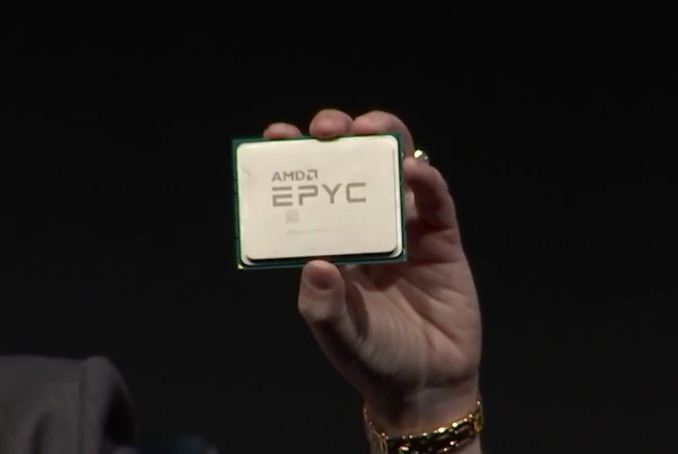

 Quote
Quote
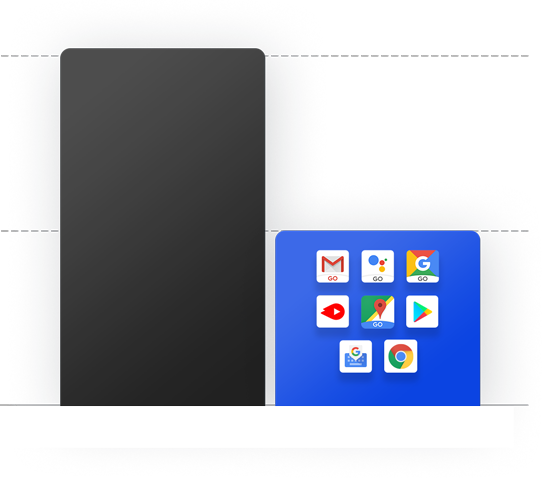


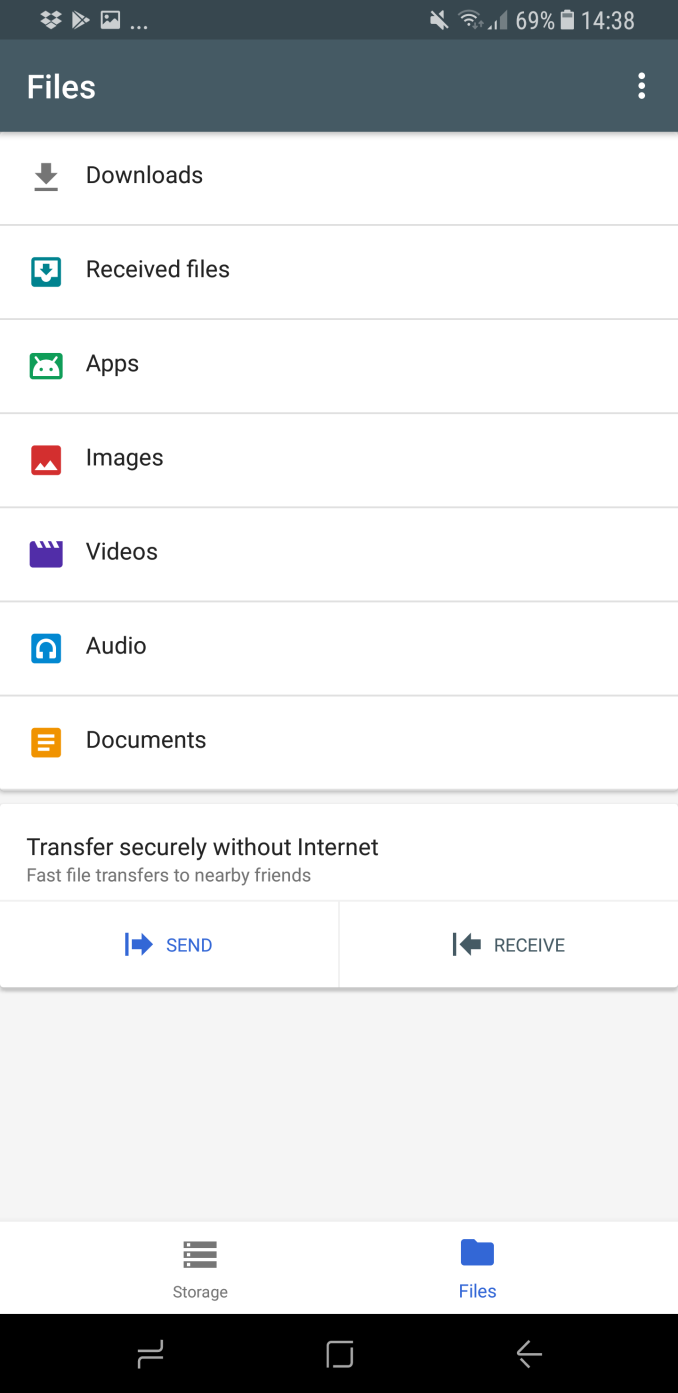

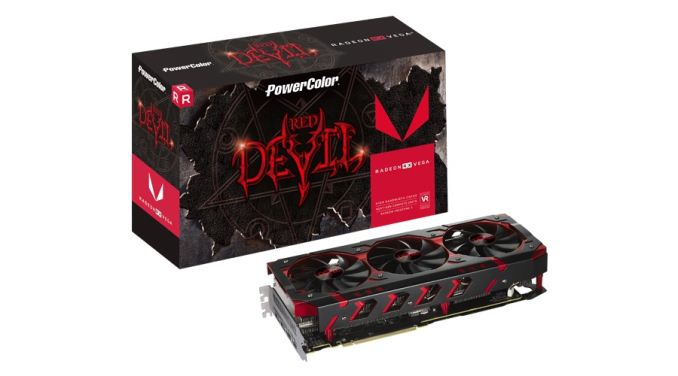
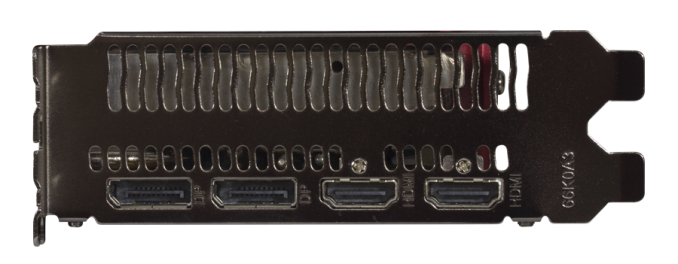

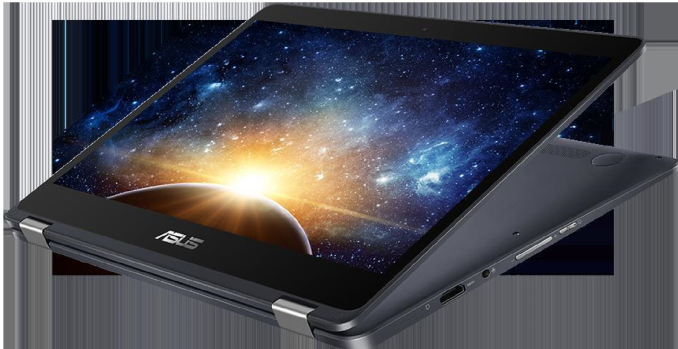
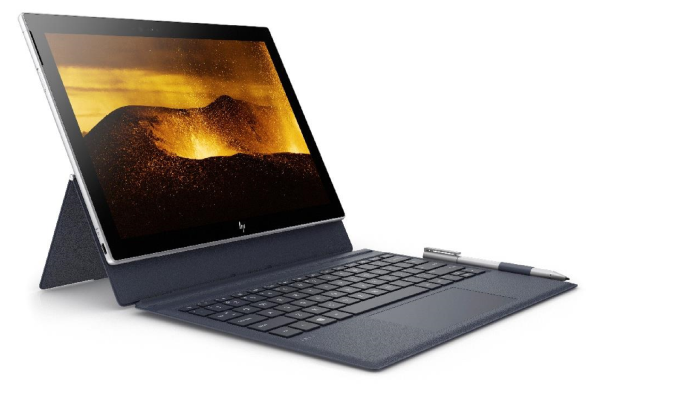
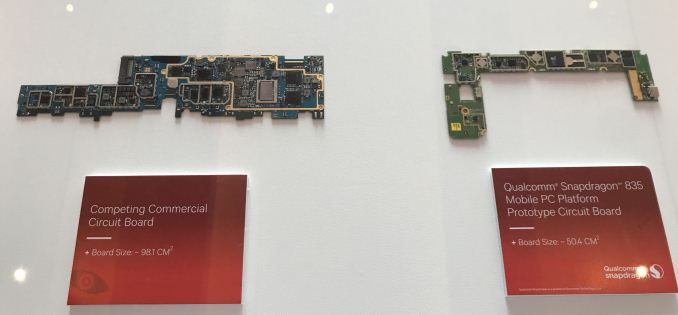
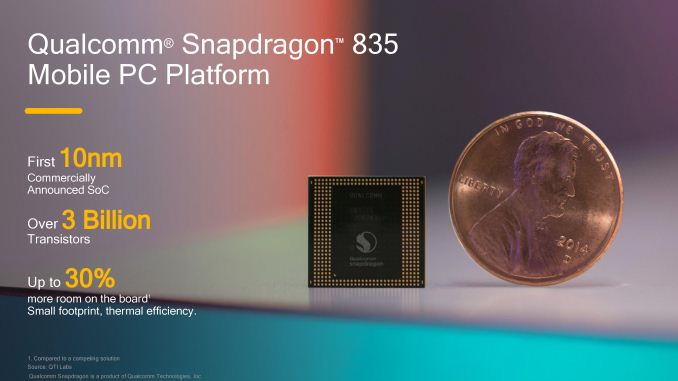
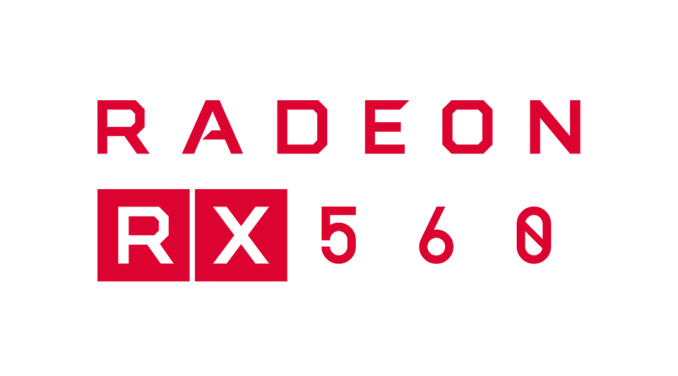
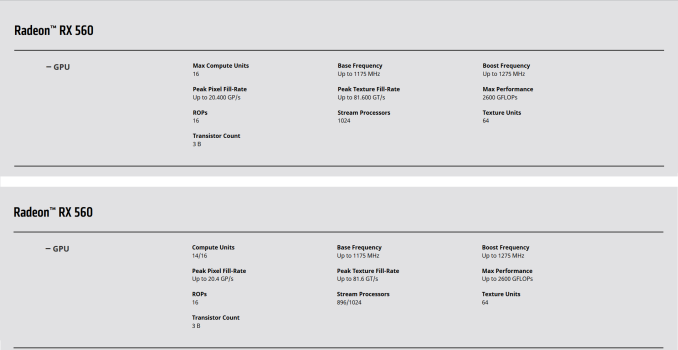

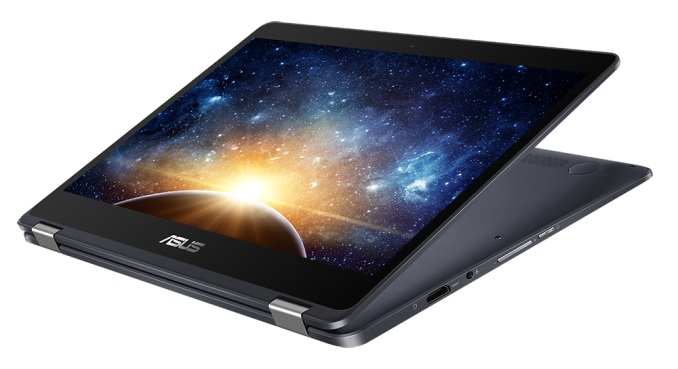



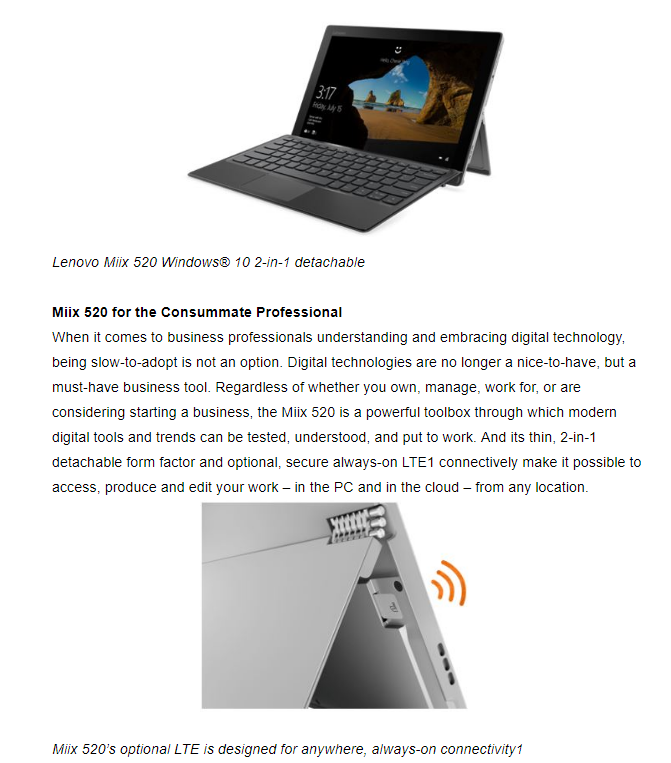

















Bookmarks